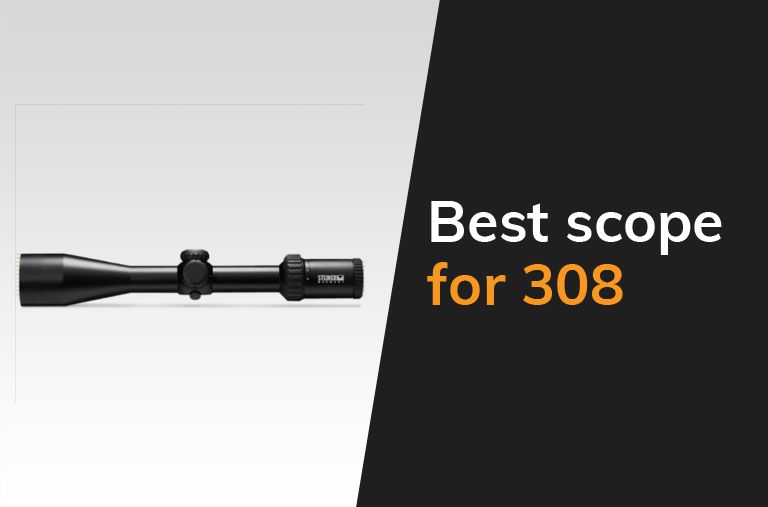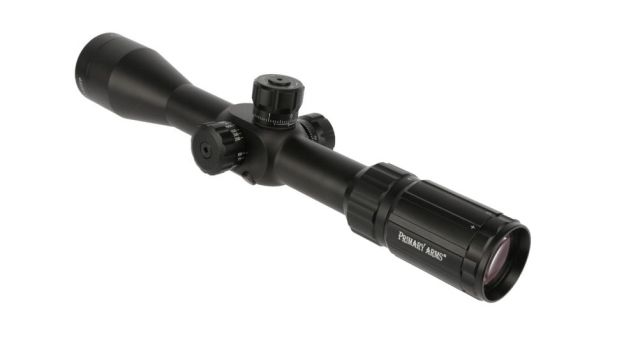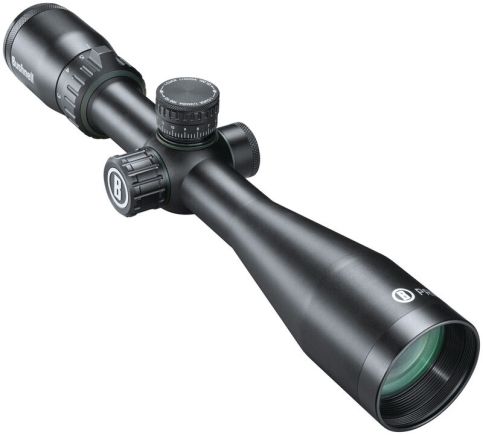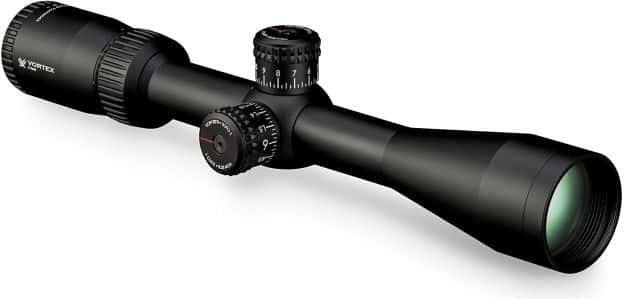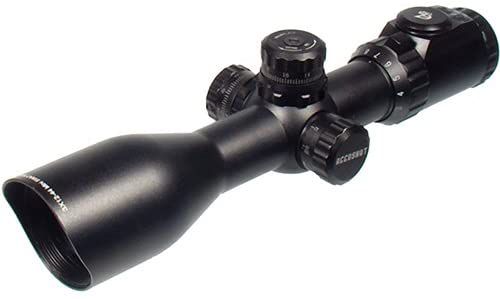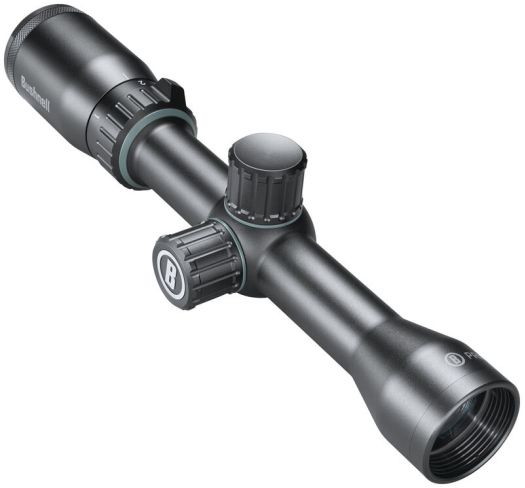At a Glance: The Best Scope for 308
- OUR TOP PICK: Steiner T5Xi 1-5x24mm Rifle Scope
- RUNNER UP: Vortex Strike Eagle 1-8X24 GEN2 Rifle Scope
- BEST BUDGET OPTION: Leupold VX-Freedom 3-9x40mm Rifle Scope
Comparison of The Best Scope for 308
| PRODUCT | DETAILS | ||
|---|---|---|---|
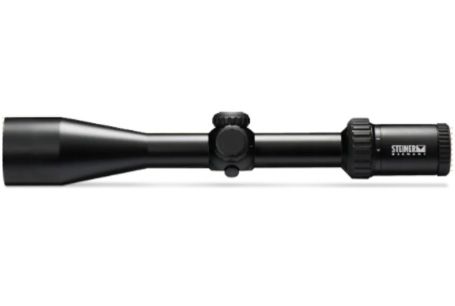
Our Top Pick
|
Steiner T5Xi 1-5x24mm Rifle Scope |
|
View Latest Price |
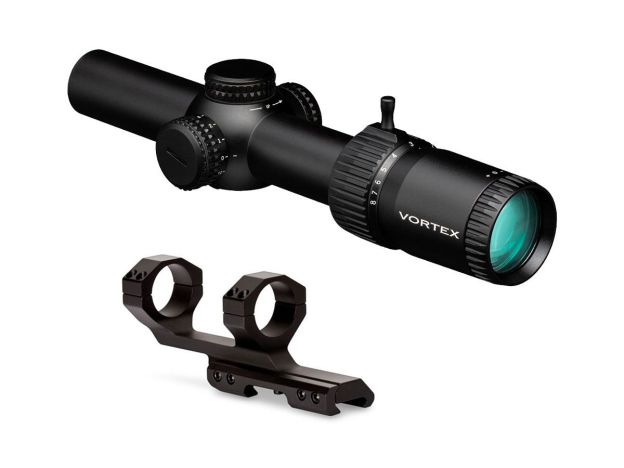
Our Top Pick
|
Vortex Strike Eagle 1-8X24 GEN2 Rifle Scope |
|
View Latest Price |
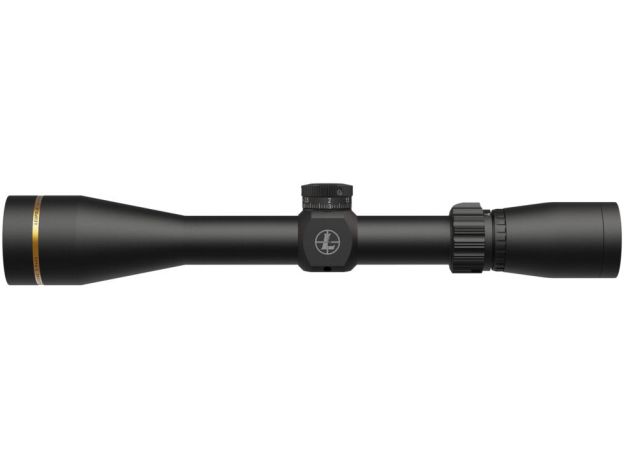
Our Top Pick
|
Leupold VX-Freedom 3-9x40mm Rifle Scope |
|
View Latest Price |
The .308 is a hefty cartridge with excellent ballistics and long-range accuracy. For most people, iron sights simply don’t help this cartridge reach its full potential. Optics can solve this problem and turn your 308 into a precision rifle, which extends your range as well. Here are the best scopes for .308 rifles.
Best Scope for .308 Rifles Long Range & Budget Scopes Reviewed
There’s an enormous variety of riflescopes available for .308 and other large cabers, and they each offer a wide range of features. In this review you will find the best long range scopes, scopes for those on a budget, and some of the best options for AR 10’s. Here are eight of the best scopes for .308 rifles, along with what they’re best for.
Steiner T5Xi 1-5x24mm Riflescope
Steiner produces a precision rifle scope that includes a unique tactical reticle for close and medium-range shooting. This scope is designed to excel in close-quarters shooting, and it also features an illuminated reticle.
This German-designed scope is manufactured in the United States, which makes it a high-quality option for rugged .308 rifles. The illumination of this scope is excellent, making it one of the best scopes for optical brightness available today.
KEY FEATURES
- Weight: 19.4 oz
- Reticle: 3TR 7.62
- Max Magnification: 5x
- Eye Relief: 3.50″, 4.0″
- Illuminated red dot sight reticle
- Black 30mm aluminum case
- Waterproof, shockproof, and fogproof
The adjustment knob for magnification is angled, which allows you to check and adjust your range without losing your general shooting stance. The Steiner T5X1 is surprisingly compact and lightweight, which is an excellent feature to have on close-quarters defense rifles. The traditional sight picture is easy to use and features an illuminated red dot in the center that’s easy to see during the day.
Build quality is where the Steiner T5Xi excels. Every piece of this scope is manufactured from the highest quality materials available. By every measure, this Steiner product is a professional scope designed for extended service life, and it’s durable enough to use in the harshest conditions.
Pros
- Works well as a red dot
- Excellent illumination during daytime
- Easily adjustable – Second focal plane
- Locking diopter
Cons
- Not ideal for long-range hunting
- 600 yard max range
- BDC reticle
- Mounting hardware not included
Vortex Strike Eagle 1-8X24 GEN2 Riflescope
Vortex produces this premium tactical riflescope that’s ideal for defensive .308 rifles such as the AR-10. This scope features true 1x magnification that’s adjustable up to 8x, allowing the shooter to effectively engage targets at almost any practical range.
KEY FEATURES
- Weight: 17.6oz
- Length: 10.0 in
- AR-BDC3 etched illuminated reticle
- Fast Focus Eyepiece allows quick and easy reticle focusing.
- Thread-in throw lever
- Lifetime Warranty
This feature makes the Vortex Strike Eagle one of the best .308 scopes for close ranges. The Vortex Strike Eagle features an electronically-illuminated AR-BDC3 reticle, which is ideal for bright and low-light shooting. The body of the scope is shockproof, fogproof, and waterproof, making it ideal for all outdoor conditions.
The reticle is also coated and glass-etched for superb visibility and a crisp sight picture. Glass etching is not always available on lower-quality scopes. This model also features a picatinny rail mount, which is rarely included in the box. In other words, this scope is ready to go right out of the box.
Pros
- Magnified for point-blank to medium-range shooting
- Easily adjustable on the go
- All hardware fits standard AR-10 rails
- Easy to use for inexperienced shooters
- Shockproof, Waterproof and Fogproof
Cons
- Illumination may be too dull for bright days
- Sight picture not as precise as hunting scopes
Leupold VX-Freedom 3-9x40mm Rifle Scope
Leupold is a well-known scope and optics manufacturer with a well-designed .308 scope with a 3-to-1 zoom ratio and several unique features. We believe the VX-Freedom scope is the best Leupold AR-10 scope on the market today.
The VX-Freedom scope is a great all-around rifle scope for hunting, target shooting, and general use. It’s made from 6061-T6 aircraft-grade aluminum, which is lightweight, corrosion-resistant, and holds up well to all weather conditions.
KEY FEATURES
- Weight: 12.2oz
- 3:1 zoom ratio
- Duplex reticle with 10 minutes of emergency illumination
- User-friendly VOA windage and elevation adjustment knobs
- 100% waterproof and fogproof
It also protects the delicate internal components from the shock of recoil, which helps you maintain a locked sight picture for accurate follow-up shots.
This scope features what we would call a ‘last-minute’ illumination system, which increases the brightness of the sight picture for around 10 minutes. The scope features a duplex reticle, which is easy to use and helps your eyes lock onto the target quickly. It also doesn’t require batteries to work during the day, which means you can leave it unattended and never worry about dead batteries.
Windage adjustment is 1 MOA, which is quick and precise. Elevation adjustment is also VOA, which makes it easy to make consistent adjustments whenever necessary. Overall, this scope is an excellent value for everyday use.
Pros
- Ideal for hunting
- Fantastic clarity of the optic
- Very clear at dusk and dawn
- Quick target acquisition with thin lines at the center
Cons
- Minimum 3x magnification is not ideal for close ranges
- Mounting hardware not included
- Not fully illuminated
Primary Arms 4-14×44 Mil-Dot Rifle Scope
If you are looking to try out a first focal plane (FFP) mil/mil riflescope without the commitment of big bucks this scope is for you! The Primary Arms Mil-Dot rifle scope is a first focal plane scope with a very wide range for field and target use. This scope also takes .308 recoil all day like a champ!
KEY FEATURES
- Weight: 23.9 Oz
- Length: 12.9 in
- Non-illuminated MIL-DOT reticle
- First Focal Plane reticle stays true at all magnifications
- Exposed turrets
- Anodized matte black 6063 aluminum case
The practical range of this scope starts at 10 yards, making it one of the best budget scopes AND a great scope for beginners. This is a daytime scope, as it’s not illuminated. However, the advantage of a non-illuminated scope is that you aren’t ever dependent on batteries when it really counts.
The high-quality lenses provide a clear, crisp, and bright sight picture, and the durable aluminum case ensures maximum protection of the internal components.
Like all high-quality tactical rifle scopes, the Primary Arms rifle scope is shockproof, waterproof, and designed to prevent lens fogging. It has a 30mm case diameter, which is compatible with the majority of rifle scope mounting hardware. Magnification starts at 4x and coaxes out at 14x, making it ideal for medium to long-range hunting and target shooting.
Pros
- Excellent budget hunting scope
- Long-range magnification
- Glass is clear as is reticule at all magnification settings.
- Easy-to-use adjustment knobs
- Weather-resistant
Cons
- Not ideal for close-quarters combat
- Eye relief can be finicky, especially at higher powers
Bushnell Prime 3-12x40mm Rifle Scope
Bushnell has been a household name in optics since before the Second World War. As a result, the company has a reputation for producing precise and high-quality optics. The Bushnell Prime scope is likely the best scope for 308 rifles in its class.
KEY FEATURES
- Weight: 17 oz
- Length: 12.0 in.
- 3x to 12x magnification
- 1-inch tube diameter
- 40mm objective lens
- Included Bullet Drop Compensation (BDC) turrets
- Second focal plane reticle
The Bushnell Prime riflescope features a 3x to 12x magnification range, making it ideal for medium to long-range hunting and target shooting. It’s an excellent general-purpose scope that works just as well on a bolt-action hunting rifle as it does on a tactical AR-10.
This is a second focal plane scope with a 40mm objective lens diameter. It benefits from a wide lens, as the field of view at 100 yards is a wide 29 feet. The scope is durable and ideal for use in most weather conditions, and the multi–X crosshairs are familiar to most shooters.
Pros
- Multiple BDC turrets for quick and easy shot placements
- Ideal for medium and long-range shooting
- Ideal for hunting rifles
- Fits most rifle platforms
- Effective for enhancing .308 range
Cons
- Not illuminated
- Less rangefinding capabilities than some competitors
Vortex Optics Diamondback 4-12×40 Second Focal Plane Riflescope
Here’s a full-size vortex optic .308 riflescope with dead-hold MOA accuracy and a traditional no-frills sight picture. TItis scope is made with high-quality materials, and the lenses are coated for clarity and brightness even in low-light conditions.
KEY FEATURES
- Weight: 1lb
- Eye Relief: 3.9 in
- Long-range usability
- Dead-Hold BDC reticle
- VMR-1 MOA reticle
- Shockproof, weatherproof, and fogproof sealed tube
One of the most convenient features of the VortexOptics Diamondback scope is its easy-focus system. It features a labeled ring around the front of the rear lens housing, which is tactile and easy to use. You can also count on this scope to retain its zero thanks to its ‘Dead-Hold’ BDC reticle.
The Vortex Diamondback also features a precise scope glide erector which makes it easy to track game and maintain an accurate sight picture. These features combine to make the Vortex Diamondback one of the best long-range scopes for .308 hunting rifles.
Pros
- Ideal for long-range hunting rifles
- Turrets are great
- Zoom and all other focal planes are easy to adjust
- Glass is clear as can be
Cons
- 9.1-inch length is too long for some rifles
- Sight picture is one color and not illuminated Vortex
UTG 3-12X44 30mm Compact Scope
Here’s a compact riflescope with a range of features and high-quality construction. The UTG Compact Scope is a 36-color tactical-range rifle scope that’s filled with useful features.
KEY FEATURES
- Electronic recoil-proof illumination
- 12x magnification
- 30mm tube diameter
- Integrated sunshade
- 1.45 lbs overall weight
The sight picture of this scope is magnified 12x, which makes it ideal for short to medium-range precision shooting. This scope is smaller and lighter than most 12x rifle scopes, making it one of the best compact 308 scopes on the market.
But what else sets this 30mm scope apart from the competition? For one, it features a mil-dot sight picture, which is precise and easy to use. Additionally, it’s electronically illuminated and utilizes a shockproof circuit system to prevent interruptions under recoil.
Pros
- Lightweight and compact
- Tactical SWAT range
- Lifetime warranty
- Precision sight picture locking
- Works well on AR-platform rifles
Cons
- Rail mounts not included
- Color-changing feature can be tricky to use
Bushnell Prime 1-4×32 Riflescope
If you like the robust durability of Bushnell Prime scopes, here’s the perfect option for close-range rifle builds. The Bushnell Prime 1-4×32 rifle scope is durable and ideal for precise short to medium-range shooting. Bushnell designed this scope specifically for hunters and close-quarters shooters. It features multi-coated lenses for brightness and durability, and it’s fog, weather, and shock-resistant.
KEY FEATURES
- 1x to 4x magnification
- 32mm objective lens diameter
- Coated lenses for brightness and durability
- Waterproof, shockproof, and fogproof
- 100-yard parallax
The lenses also feature a special coating, which makes them highly resistant to scratches and damage from everyday use. The lenses also feature a special EXO Barrier lens coating, which makes them highly resistant to scratches and dirt buildup from everyday use.
This Bushnell Prime close and medium-range scope features a 32mm objective lens diameter and a 1-inch tube. It mounts easily to the majority of rifles, and it’s extremely lightweight. This scope is ideal for close-range AR-10 builds, and it also works well as an addition to hunting rifles that also have iron sights.
Pros
- Perfect for short and medium-range use
- Durable coated lenses offer high brightness
- Easy to adjust
- Compact and lightweight
- Excellent overall value
Cons
- Not ideal for long-range shooting
- Non-illuminated reticle
How Do You Choose The Best Scope For 308 Caliber Rifles?
The 308 cartridge is versatile, And so are the rifles that fire it. That means that you Should consider the rifle in question and what you plan to use it for when choosing a scope.
The AR-10 is a rifle that could benefit from a short or long-range scope. For a tactical combat AR-10, a small and compact scope such as the UTG 30mm Compact Scope would be ideal.
Hunting rifles, on the other hand, benefit most from traditional long-range rifle scopes. Scopes that would be too large for a tactical rifle, such as the Leupold VX-Freedom, are ideal for long-barreled hunting AR-10 and bolt-action 308 rifles.
Factors to Consider when Buying a Scope for 308
After deciding what the primary use of your rifle will be, it’s time to choose a scope. Here’s a short list of factors to consider.
- Scope Length and weight
- Scope housing diameter
- Magnification
- Illumination
- Reticle type
- Lens brightness
- Mounting system
All of these factors can determine whether you get the shot and if you’re comfortable using your rifle. Price is also a factor, as it’s always important to find the best scope that fits your budget. Let’s dive deeper and cover the differences.
Scope Length, Width, and Diameter
Scopes come in a wide range of sizes, and size doesn’t necessarily correlate with magnification power or quality. The best scope for 308 hunting rifles tend to be relatively long and lightweight, in the neighborhood of 12 inches in length and about a pound and a half in weight.
Smaller tactical scopes usually come with more features in a more compact package, which shortens the length a few inches but adds a few ounces of weight. If you plan to carry your rifle on long hunting trips, it may be best to opt for a lighter and more basic scope.
Magnification
More isn’t always better when it comes to magnification. Hunting rifles benefit from high magnification, which usually begins in the 3-.9x range. That said, most hunting scopes are too high in magnification for close-quarters tactical rifles.
The best close-range scopes begin with 1x minimum magnification, which allows for open-eye close-range shooting. If you intend to use your rifle for mostly close and medium-range shooting, it’s best to opt for a scope with lx minimum magnification.
Using Mil Dot
An example of standard Mil-Dot Reticle.
The most commonly known of these “ranging” reticles is probably the mil-dot. Its name derives not from its military origin, but from the fact of being graduated in mil, which is, as we have seen (check out the full post here), is an angular unit of measurement. In a mil-dot reticle, the distance between the center of the reticle and the centre of the first dot, as well as de distance between the centres of two consecutive dots, is equal to 1 mil. The size of the dots varies among the various types of mil-dot reticles. In the standard mil-dot developed by the US Army, for example, each dot is equal to 0.22mil.
How to Triangulate
Step 1
If you know the size of your marks and the size of your target, you can easily calculate the distance. All you have to do is to aim at the target, positioning the reticle to get the most accurate measurement possible. It is advisable to always measure the longest portion of target. In example, if your target is a silhouette, you should measure its height. This way, you will always maximize the accuracy of your triangulation.
Once you have taken the angular measure of the target, you can obtain the distance with a simple formula.
Step 2
Metric: If you work with metric units of measurement, you just have to divide the size of the target (in millimetres) by the number of mil it measures on the reticle, and you will obtain the range in meters. For example, you know that your target is a paper sheet of 500mm X 500mm, aim at it with your scope and you’ll see that the target measures 1.5mil (from the centre of the reticle, to half way between the first and the second dot, in a standard mil-dot reticle). Calculate 500/1.5 and you’re answer is 333m, which is the distance from you to your target.
US/Imperial: Working with US/Imperial units, the formula is a little different. You’ll need to multiply the size of the target (in inches) by 22.77, and then divide the result by the number of mils it measures on the reticle to figure out the distance in yards. For example, if you have a target of 20in x 20in, which measures 1mil on your reticle, calculate (20×22.77)/1 and you’ll 455yds.
MOA
Almost all the ranging reticles are graduated in mil, but there are also MOA reticles (I’m starting to see more of these on the market now than there used to be), that are more US measurement-friendly. If you have a MOA reticle, to calculate the range in yards, divide the size of the target (in inches) by the number of MOA measurements on the reticle, and then multiply the value by 100.
There are also formulas that allow you to mix units of measurement, but I suggest you to keep things as simple as possible and stick either with mil and metres/millimetres, or with MOA and yards/inches.
Target Field Measurement
As you can see, the formulas are pretty simple. What’s more challenging is to actually measure the target when you are on the field. Keeping the reticle steady enough for an accurate measurement is not always possible, unless you are using a bench rest. In addition, it’s not always easy to read the correct value at the decimal degree, and that’s that’s accuracy you need. If the target is small, or if it’s very far, a difference in reading of 0.1 or 0.2 mil can make a big difference. My advice is to always take multiple measurements, taking note of what it seems to be, at first glance, the correct value, and then take the average value between them. For example, if you are unsure if your target size between 0.6 and 0.8 mil, just take the average and input 0.7 into the formula.
Magnification
An important thing to consider when you triangulate with the reticle is magnification. If the reticle is installed on the first focal plane, its size changes with the magnification (you see it becoming smaller or bigger), along with the size of the target, and you can use it at every magnification. On the other hand, if the reticle is on the second focal plane, varying the magnification, the reticule will always appear the same size, but it may vary in relation to the perceived size of the target. In this case, the ranging can be done only at one magnification. Ranging at different magnification, the angular value of the reticles would not be true anymore. For many scopes, the ranging magnification is the highest, but it is not unusual, especially on scopes with high values of magnifications, to find it half way. Always check in your scope’s specs at which magnification you can range, and always remember to set it correctly on the field before starting the ranging process.
Non-Graduated Reticles
But what if you don’t have a ranging reticle? Many scopes, especially hunting scopes, come with standard, non-graduated reticles. This doesn’t mean that you can’t use your scope to triangulate range. Many reticles are built following angular measurements. The scope I have on my deer rifle, for example, has a stanadard Plex reticle. At the range, I discovered that the thin part of the reticle measures 2mil in length from the center to the beginning of the fattest part of the reticle. It is not very accurate for ranging, but with some practice it can work, especially at short distances and when ranging with large enough targets.
There is also a trick that everyone can use for ranging. You can use the scope’s adjustment, instead of the reticle, to measure the target. If you keep the rifle steady while you rotate the scope’s turret, you can see the reticle moving. If you count the clicks it takes to move the reticle for the target’s entire height, you have the angular measurement of the target to insert into the formula. It is not simple, because you’ll need to be rock steady (repeat in your mind: “I am a stone. I don’t move” like in Enemy at The Gates) while you turn the turret. With practice, and maybe with the help of a “spotter,” this can serve as a very accurate and reliable method.
I suggest practicing these techniques as much as you can. Triangulate known distances, or confirm your estimations with more accurate instruments. You can triangulate distances even without going to the range. Triangulate the range of objects out of your windows for example (just mind the safety rules).
To test what you’ve learned from this article, you can try to estimate the distance the distance of the target you see in the featured image at the top of this page. The white paper target is 500mm X 500mm, while the reticle is graduated in mil (the big lines are 1mil, an the smaller ones measure half a mil). Give your best guess below in the comments.
Is a 308 Rifle Good for Deer Hunting?
Fundamentally, the .308 Winchester round is just a shortened .30-06 Springfield. It’s a powerful .30-caliber cartridge with surprisingly good ballistics. As a result, .308 is a popular cartridge for deer and medium-sized game.
Unlike smaller calibers, .308 is almost universally legal for deer hunting with few restrictions. Some care is required when using AR-10 rifles for deer hunting, as some states and localities restrict the use of semi-automatic rifles or certain magazine capacities for hunting.
What Is The Best Long Range Scope For 308?
The best long-range 308 rifle scope should be lightweight, durable, and capable of holding a zero between shots. Based on these qualifications, we believe that the Vortex Optics 4-12×40 Diamondback Rifle Scope is the best long-range optic for 308 rifles.
Magnification is an important factor to consider when choosing the best 308 scopes for long-range shooting, but it’s not the only quality to take into account. The Vortex Diamondback is a high-quality scope with a reputation for holding accuracy, even on lighter bolt-action rifles with heavier recoil. It’s also light enough to carry on long trips and reasonably compact as well.
The 308 rifle is powerful and effective at long ranges, which is why adding the right scope can help you make the most of its capabilities. So, what’s the best scope for 308 rifles and why?
Overall, the best scope for 308 rifles on our list is the Steiner TX5i 1-5x24mm scope. It features powerful magnification, excellent brightness, and the best build quality in its class by a significant margin.

